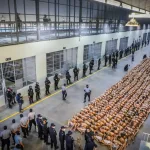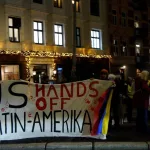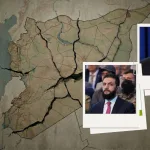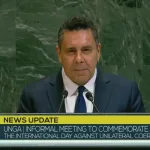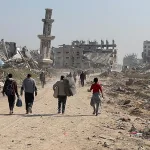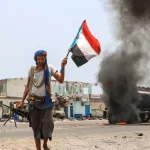
By Peter Beinart – Mar 9, 2021
The Biden Administration has two stated goals: first, they want to reenter the 2015 nuclear deal. Second, they want to resist Iranian influence in the Middle East, which they consider singularly malevolent. This second goal is rarely questioned.
WHEN JOE BIDEN and his top advisors describe their approach to relations with Iran, they usually emphasize two goals. First, they want to reenter the 2015 nuclear deal. Second, they want to resist Iranian influence in the Middle East, which they consider singularly malevolent. Biden, National Security Advisor Jake Sullivan, and Secretary of State Antony Blinken have all characterized Iran’s foreign policy as “destabilizing.” Biden has also called Tehran’s behavior “aggressive,” while Blinken has added the epithet “egregious.”
In Washington, the first goal attracts the most attention because it’s the most controversial. Virtually all the Republicans in Congress, and some of the Democrats, believe the nuclear deal was a mistake, and oppose reviving it. The second goal, obstructing Iranian regional influence, occasions less discussion because the presumption underlying it—that Iran is a uniquely bad actor in its neighborhood—is widely considered self-evident.
But this rarely questioned assumption has enormous consequences for US policy in the Middle East. The Obama and Trump administrations used the specter of Iranian aggression to justify their support for the immensely destructive war that Saudi Arabia and the United Arab Emirates (UAE) have waged in Yemen. And although the Biden administration has ended support for “offensive operations” in that war and is reviewing arms sales to Saudi Arabia and the UAE, the charge of Iranian malevolence will likely justify their continuation in some form, just as it helps to justify US military aid to Israel. The claim that Iran is especially destabilizing also rationalizes many of America’s non-nuclear sanctions on the country, most of which will remain even if the Biden administration rejoins the nuclear deal, and which ensure that the US does not establish normal diplomatic relations with Tehran.
These US policies, which make the Middle East more violent and less stable, are built on a false premise. Whether one examines Iran’s defense spending, its support for “terrorism,” or its military intervention in other countries, the country’s foreign policy is no more aggressive than those of Saudi Arabia, the UAE, Turkey, or Israel, its chief regional competitors. In the Middle East, Iran is one brutal, self-interested, middle power among others. What distinguishes it from its adversaries is not its malevolence, but its independence from the United States.
Recognizing that Iran is no more destabilizing than its foes is not “whataboutism.” It is the precondition for a more effective and humane US policy in the region. Blinken has vowed that, in addition to resuscitating the nuclear deal, the Biden administration will seek a new agreement to restrain Iran’s missile program and end “its destabilizing actions in country after country.” Yet Iran is unlikely to limit its missile program while the US keeps arming its rivals. Curbing Iranian intervention in Syria and Yemen will require acknowledging that Tehran has security concerns that can only be assuaged if the US encourages its adversaries to change their behavior as well. By rejoining the nuclear deal, the Biden administration may avert war with Iran. But unless it challenges the bipartisan assumption that Iran behaves fundamentally differently than its neighbors, it has little chance of helping to broker regional peace.
WERE TEHRAN UNIQUELY MENACING it would, presumably, possess a uniquely menacing military arsenal. It does not. According to the World Bank, Iran spends just under $13 billion per year on defense. Israel, Turkey, and the UAE each spend over $20 billion. Saudi Arabia spends over $60 billion. Critics might respond that Iran’s relatively meager military budget reflects not a lack of desire for military dominance, but a lack of capacity, since sanctions have starved its government of revenue. But even as a share of GDP, Iran’s military spending is lower than Turkey’s, less than half of Israel’s or the UAE’s, and less than one-third of Saudi Arabia’s. In fact, Iran’s defense budget has been roughly flat as a share of GDP for the last 30 years, a trend preceding the crushing financial and oil sanctions imposed on Tehran by the US and its allies a decade ago.
Today, Iran’s nuclear and ballistic missile programs provoke particular alarm in Washington. But before the Islamic Revolution, when the Shah was a US ally, American presidents helped him develop Iran’s nuclear program. With their assistance, notes Ariane M. Tabatabai in her book, No Conquest, No Defeat, the Shah developed a policy of nuclear “hedging,” in which “he would establish nuclear infrastructure for civilian use”—for instance, as a source of electricity—“which he could later leverage to build a nuclear weapon if his country needed one.”
After the Islamic revolution in 1979, Iran transformed from an American partner into an American adversary. And it was this shift in geopolitical orientation that reshaped US attitudes toward the country’s nuclear program. Following the trauma of the Iran–Iraq War, in the 1980s, Iran began developing the capacity to build a bomb. It halted that effort in 2003, according to US intelligence. Instead, Iran’s government returned to hedging: Tehran maintained its dual-use technology, which gave it the capacity to revive its weapons program at a future date. What had shifted was not so much Iran’s nuclear aspirations—which exhibited significant continuity despite the change in regimes—as America’s attitude toward them.
But Iran is not the only power in the region with possible nuclear ambitions. As Mark Fitzpatrick, Associate Fellow at the London-based International Institute for Strategic Studies, explained to me, Saudi Arabia appears much further away from the capacity to build a bomb than Iran, but it has also proved more resistant to the intrusive international inspections that Iran accepted in 2015. That’s worrying because, as The New York Times reported last summer, US intelligence agencies have “raised alarms that there might be secret Saudi–Chinese efforts to process raw uranium into a form that could later be enriched into weapons fuel.” What’s alarming isn’t just the prospect that Riyadh may be developing the ingredients for a bomb, but the fact that, unlike in the case of Tehran, the outside world knows so little about its efforts.
Then there’s Israel, which most observers believe boasts not just a nuclear weapons program, but nuclear weapons—between 80 and 200 of them, Fitzpatrick estimates. (Israel neither confirms nor denies that it possesses nuclear weapons.) And while Saudi Arabia has not permitted the same intrusive inspections that Iran allows, Israel has not even signed the nuclear Non-proliferation Treaty, which means it permits barely any international inspections at all. (Not only have American presidents declined to pressure Israel to dismantle its nuclear arsenal, US government employees are barred from even acknowledging it.)
Israel’s missile program is also more aggressive than Tehran’s. According to Fitzpatrick, the Jewish state’s longest-range ballistic missiles can travel 5,000 kilometers, more than twice as far as Iran’s. To be sure, Tehran’s missile program does clearly outmatch that of its other chief rivals. But viewing that disparity in isolation is misleading. Iran developed its missile arsenal when, as a result of US sanctions, it struggled during the Iran–Iraq War to procure spare parts for its largely American-made air force. To this day, its fleet remains antiquated compared to the modern air forces operated by Saudi Arabia, the UAE, and Turkey. If Iran’s missiles destabilize the Middle East, then Riyadh, Abu Dhabi, and Ankara’s warplanes do, too.
IN CASTING IRAN as uniquely aggressive, Washington policymakers cite not only its military arsenal but also its supposed status as the “world’s worst state sponsor of terrorism.” Evaluating that claim is challenging because defining terrorism is famously contentious. Across the world, governments often define it as political violence by organizations and regimes they oppose. In the US, for instance, Iran is routinely accused of terrorism for aiding militias that kill US troops in Iraq, even though the United Nations defines terrorism as violence against “civilians or non-combatants.” By contrast, the term is rarely applied to killings—which Iran alleges were carried out by Israel and the United States—of Iranian nuclear scientists, even when they are not members of the country’s military.
But even if you accept the US government’s definition of terrorism, it’s hard to sustain the claim that Iran is a more “egregious” purveyor of terror than its key rivals. Iran has certainly supported groups that attack civilians. To name a few examples: Argentinian prosecutors accused Tehran of aiding the perpetrators of a 1994 attack that killed 85 people at a Jewish community center in Buenos Aires. In 2012, Iranian agents tried to assassinate Israeli diplomats in Thailand and Israeli tourists in Bulgaria, reportedly in retaliation for Israel’s attacks on Iranian scientists. A Belgian court recently convicted an Iranian diplomat of plotting an attack on Iranian opposition activists in Europe.
Yet as ugly as this behavior is, it pales in comparison to the terrorism perpetrated by Sunni extremists, many financed in Abu Dhabi and Riyadh, as the US government’s own reports suggest. As The New Republic’s Jefferson Morley noted in 2019, “For the past twenty years or so, the annual reports of the National Counterterrorism Center have attributed the vast majority of the Islamic terrorist attacks around the world since 2001 to ‘Sunni extremists’. . . often funded by wealthy Persian Gulf Arabs.” The degree to which regimes like Saudi Arabia and the UAE are complicit in the actions of their citizens remains murky. But a section of the Congressional Joint Inquiry into the 9/11 attacks—which was declassified in 2016—declares that “while in the United States, some of the September 11 hijackers were in contact with, and received support or assistance from, individuals who may be connected to the Saudi Government.” In 2014, Joe Biden himself accused the Saudis, Emiratis, and Turks of having “poured hundreds of millions of dollars and tens of tons of weapons into . . . the extremist elements of jihadis” in Syria. Two years ago, CNN reported that Riyadh and Abu Dhabi had given US-made weapons to al Qaeda fighters in Yemen. In its support for “terrorism,” Iran is one bad actor in a region full of them.
THE THIRD ELEMENT of Iran’s supposedly unique belligerence is its intervention in neighboring countries—what Biden has called “destabilizing activities, which threaten our friends and partners in the region.” But here, too, what really bothers America’s leaders is less Iran’s aggression than its independence.
When the Shah meddled in his neighbors’ affairs to keep leftists at bay during the Cold War, American presidents did not condemn Iran’s behavior as destabilizing. They welcomed it. In her history of Iranian national security strategy, Tabatabai notes that, in the late 1950s, the Shah sent arms to Lebanese president Camille Chamoun when he was threatened by allies of Egypt’s Arab nationalist leader, Gamal Abdel Nasser. In the ’60s, Tehran provided weapons and training to Yemen’s monarch, who faced his own Nasserite challenge. In the ’70s, it sent thousands of Iranian troops to buttress a conservative king harried by leftist rebels in Oman. “As Iran’s regional policies became more assertive,” Tabatabi writes, “they more resembled those later pursued by the Islamic Republic.”
Seen in this historical perspective, Iran’s current interventions look less like a revolutionary bid to dominate the Middle East and more like a continuation of the jockeying for influence that Tehran has engaged in since the middle of the last century. Take Iran’s current involvement in Syria. Since the Islamic Revolution, the Assad family has been Iran’s primary regional ally: When virtually the entire Arab world backed Saddam’s invasion of Iran in 1980, only Syria took Iran’s side. So when Syrians rose up against their government during the Arab Spring, Iran’s leaders came to Bashar Assad’s aid rather than allow their longtime ally to be replaced by a pro-American government or one with ties to extremist Sunnis—either of which might have left Tehran isolated. That intervention—conducted in conjunction with Iran’s Lebanese ally, Hezbollah—wasn’t exactly “destabilizing,” since it buttressed a government already in power, but it was ghastly. Iran enlisted Shia Muslims from Pakistan and Afghanistan to fight in Syria; some were as young as 14, according to Human Rights Watch, which makes their recruitment a war crime. In helping Assad retake control over much of his country, Iran—along with Russia—abetted some of the worst horrors of the 21st century.
But in assessing whether Iran is uniquely aggressive, it’s worth noting that Iran’s regional adversaries have also meddled violently in Syria. While Tehran has sent troops to bolster Assad, Turkey has sent troops to weaken the Kurdish rebels who fought against him. Israel last year launched at least 39 airstrikes into Syria, killing over 200 people in its effort to prevent Iran and Hezbollah from building up arsenals there. The Saudis and Turks have funded Syrian rebel groups with ties to al Qaeda.
Outside of Syria, too, Iran is one bellicose actor among many. In 2011, the same year Tehran sent its troops to prop up a vicious regime run by a minority religious clique in Syria, Riyadh and Abu Dhabi did the same in Bahrain. In Lebanon, Iran wields power by backing Hezbollah, which murders political opponents. For its part, Riyadh was accused by Lebanon’s president of holding that country’s prime minister “hostage” in 2017. In Israel-Palestine, Iran supports Hamas, which from its base in the Gaza Strip has launched rocket attacks against Israeli civilians. But Turkey backs Hamas as well. Meanwhile, Israel—with assistance from Egypt—blockades Gaza, making life “unlivable” for millions of people, according to the United Nations.
To buttress their claims that Iran’s actions are uniquely destabilizing, critics often cite the country’s support for the Houthi rebels in Yemen. That support does indeed fuel violence. Although the Houthi insurgency predates its partnership with Iran, and the US government has acknowledged that the Houthis don’t take orders from Tehran, they do now receive millions of dollars in weaponry annually, in violation of a UN arms embargo. But if the Iranians have spent millions per year to support the Houthi rebellion, the Saudis have reportedly spent billions per month to stop it. According to Human Rights Watch, the Saudis and Emiratis have carried out more than 20,000 air strikes over the last five years, which have demolished “hospitals, school buses, markets, mosques, farms, bridges, factories, and detention centers.” Human Rights Watch has also accused both Saudi and UAE forces of torturing Yemeni detainees, and blamed the Saudi-led coalition for a blockade of the country that has helped to create what Oxfam calls “the world’s largest humanitarian crisis.” (In 2019, the UAE pulled most of its forces out of Yemen.) Tehran’s behavior in Yemen has been reprehensible; Riyadh and Abu Dhabi’s has been even worse.
SURVEY THE GREATER MIDDLE EAST and it becomes clear that Iranian intervention is in fact less extensive than the intervention practiced by its key competitors. The reason is straightforward. In Lebanon, Syria, Yemen, and Iraq, Iran participates in proxy battles that pit its Shia allies against Sunni adversaries. But there is another proxy war roiling the Middle East: between Sunni forces sympathetic to the Islamist Muslim Brotherhood and those that use the specter of Islamism to entrench authoritarian rule. In this second battle, from which Iran is largely absent, Saudi Arabia, the UAE, and Turkey wage war against each other.
In Egypt, for example, the UAE and Saudi Arabia financed efforts to overthrow Mohammed Morsi, a Muslim Brotherhood president democratically elected in 2012, and then bankrolled the oppressive regime of General Abdel Fattah Al-Sisi after he seized power in a coup. Similar allegations of Islamism drove Saudi Arabia and the UAE to blockade neighboring Qatar in 2017. In Libya, Abu Dhabi and Riyadh have used the supposed threat of Islamism to justify their support for the warlord Khalifa Haftar—in violation of a UN arms embargo—in his fight against a government recognized by the United Nations. During Haftar’s 2019 assault on Tripoli, which was armed and financed by Saudi Arabia, Egypt, and the UAE, The Wall Street Journal reported that his forces shelled “hospitals, residential neighborhoods and the capital’s only functioning airport,” and forced 200,000 people from their homes.
In Libya, as in Egypt, Tehran is not Riyadh and Abu Dhabi’s primary regional rival. Their key adversary is Ankara, which supports the Muslim Brotherhood. Turkey has dispatched drones, armored vehicles, and thousands of Syrian fighters, in an effort to bolster the government in Tripoli—which violates the UN arms embargo. Last year, Turkey also reportedly paid Syrian mercenaries to fight in Azerbaijan’s war against Armenia, thus placing it on the same side as Israel, which sold Baku many of the drones that helped it prevail. Iran, yet again, stood on the sidelines. Contra the Washington policymakers who claim that Iran’s foreign policy is uniquely aggressive, Tehran may actually be less aggressive than its regional foes—not because its government is more enlightened, but because, as a non-Arab, non-Sunni regime with a comparatively limited arms export industry, its sphere of influence is more circumscribed.
IN 2015, THE OBAMA ADMINISTRATION inched toward a more realistic policy toward Iran. It pushed through the Iranian nuclear deal over opposition from Republicans, and despite resistance from the governments of Israel and Saudi Arabia. But, in the process, it accepted a compromise, embracing its opponents’ vision of the Middle East as a region divided between benevolent moderates and malevolent Iran. In part as compensation for the nuclear agreement, it provided new arms sales to Saudi Arabia, an unprecedented military aid package to Israel, active US support for the Saudi-led war in Yemen, and the maintenance of America’s non-nuclear sanctions on Iran. To check Iran’s nuclear program, Obama handed a virtual blank check to its regional foes, thus escalating conflicts that have left entire countries in ruin.
Now Joe Biden faces a similar choice. His advisors want to revive the nuclear deal and then craft a follow-on agreement that curbs Iran’s regional meddling. But any diplomatic effort premised on the notion that only Iran’s adversaries can legitimately wield influence beyond their borders will fail. To help negotiate peace in ravaged nations like Syria and Yemen, the Biden administration must negotiate with Iran. It must treat the country not as a pariah but as one of the several ruthless, interventionist regimes whose interests must be accommodated if the proxy wars that have devastated the Middle East are to end. It must stop pretending that America’s friends are any less aggressive than its foes.
The alternative is to embrace a version of Obama’s brutal bargain: Avert war with Iran, but continue to stoke a regional cold war—and share responsibility for the immense suffering that follows.
Peter Beinart is editor-at-large of Jewish Currents.
Featured image: Tehran, Iran, Amanda Ahn/dbimages/Alamy
(Portside)
- Orinoco Tribune 2December 30, 2025
- Orinoco Tribune 2
- Orinoco Tribune 2
- Orinoco Tribune 2
- Orinoco Tribune 2
- Orinoco Tribune 2
- Orinoco Tribune 2
- Orinoco Tribune 2
- Orinoco Tribune 2
- Orinoco Tribune 2
- Orinoco Tribune 2



